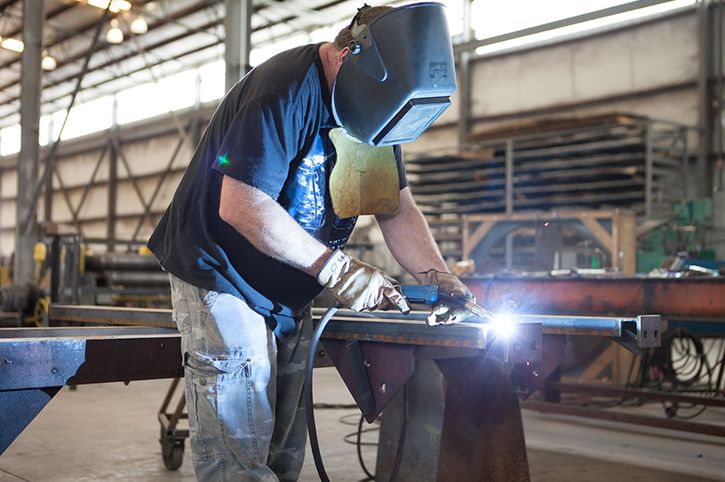Why a Welding WPS is Crucial: Enhancing Consistency and Conformity
Why a Welding WPS is Crucial: Enhancing Consistency and Conformity
Blog Article
The Ultimate Guide to Welding WPS Procedures: A Thorough Summary for Welders
In the elaborate world of welding, Welding Procedure Specifications (WPS) offer as the backbone of guaranteeing quality, uniformity, and security in welding operations (welding WPS). As we delve right into the various parts of a WPS and check out the intricacies of certification and qualification, we will certainly uncover the essential role these procedures play in the world of welding.
Significance of WPS Procedures
Comprehending the relevance of Welding Treatment Specifications (WPS) treatments is important for making certain the top quality and integrity of bonded frameworks. WPS procedures act as a roadmap for welders, outlining the essential steps, parameters, and products needed to achieve an audio weld. By adhering to WPS standards, welders can guarantee consistency in their job, resulting in dependable and structurally audio welds.
Among the primary reasons WPS treatments are important is their duty in preserving weld quality and honesty. Following the defined welding parameters and strategies described in the WPS aids avoid issues such as porosity, breaking, or insufficient fusion, which can compromise the strength and longevity of the weld. Furthermore, WPS treatments are crucial for making sure compliance with market standards and codes. By complying with established WPS guidelines, welders can show that their work meets the necessary demands for safety and security and quality, supplying guarantee to customers, assessors, and regulatory bodies. Basically, the value of WPS treatments can not be overemphasized, as they are fundamental to achieving consistent, high-grade welds that satisfy market requirements and specs.

Elements of a WPS
A Welding Treatment Specification (WPS) generally comprises crucial parts that detail the specific demands for carrying out a weld, guaranteeing consistency and high quality in the welding procedure. The key parts of a WPS consist of vital variables such as base metals, filler steels, preheat and interpass temperature levels, welding procedures, shielding gases, welding placements, and post-weld warm treatment requirements.
Base steels refer to the products being signed up with, while filler steels are made use of to fill the gap between the base steels during welding. Preheat and interpass temperature levels are essential for managing the heat input and stopping issues like fracturing or distortion. The welding process lays out the particular strategy to be utilized, whether it's gas steel arc welding (GMAW), protected metal arc welding (SMAW), or one more approach. Shielding gases shield the weld pool from climatic contamination. Welding settings specify the positionings in which welding can be carried out. Post-weld warm therapy might be necessary to ease stresses and enhance the weld's properties. A complete understanding of these components is vital for developing a effective and extensive WPS.

Qualification and Certification
Having developed the vital elements of a Welding Procedure Specification (WPS), the focus currently shifts towards the important facets of credentials and qualification in welding practices.

Certification, on the click this link other hand, is the official acknowledgment of a welder's credentials by an appropriate accreditation body or organization. Welding accreditations are typically based on the specific welding procedures, products, and placements a welder is qualified to deal with. Holding a legitimate welding qualification web link shows that a welder meets sector criteria and is proficient to execute welding tasks to the called for requirements.
Developing a WPS
To establish a Welding Treatment Specification (WPS) that satisfies market criteria, careful consideration of welding processes, products, and operational specifications is essential (welding WPS). The very first step in developing a WPS is to recognize the welding procedure to be used, such as gas metal arc welding (GMAW) or protected metal arc welding (SMAW) When the welding procedure is established, the following crucial aspect is picking the suitable materials, considering elements like base metal type, thickness, and joint style. Operational specifications such as welding present, voltage, travel speed, and protecting gas structure should likewise be thoroughly specified in the WPS.

Implementing and Keeping An Eye On WPS
Upon completing the extensive Welding Procedure Specification (WPS) that diligently information welding processes, products, functional parameters, and quality assurance steps, the focus changes to efficiently applying and keeping an eye on the established treatments. Implementation includes making certain that all welders entailed in the job are familiar with the WPS and follow it meticulously throughout the welding procedure. Efficient application and surveillance of the WPS are important for ensuring the stability, toughness, and safety of the bonded joints, ultimately contributing to the total success of the welding project.
Final Thought
To conclude, understanding and adhering to Welding Treatment Specifications (WPS) is vital for welders to ensure high quality, uniformity, and safety and security in their work. By recognizing the parts of a WPS, obtaining correct credentials and certifications, creating comprehensive procedures, and carrying out and checking them effectively, welders can improve their abilities and effectiveness in welding practices. Following WPS procedures is necessary for generating top quality welds and meeting market criteria.
In the detailed globe of welding, Welding Treatment Specifications (WPS) serve as the backbone of making certain quality, consistency, and safety in welding operations. The welding procedure describes the certain technique to be used, whether it's gas metal arc welding (GMAW), secured metal arc welding (SMAW), or an additional approach.To establish a Welding Treatment Spec (WPS) that satisfies market requirements, cautious consideration of welding processes, products, and operational parameters is vital. The first action in producing a WPS is to identify the welding process to be used, such as gas steel arc welding (GMAW) or secured steel arc welding (SMAW)Upon finalizing the comprehensive Welding Procedure Requirements (WPS) that diligently information welding processes, materials, operational criteria, and top quality assurance steps, the focus changes to successfully carrying out and keeping an eye on the recognized procedures.
Report this page